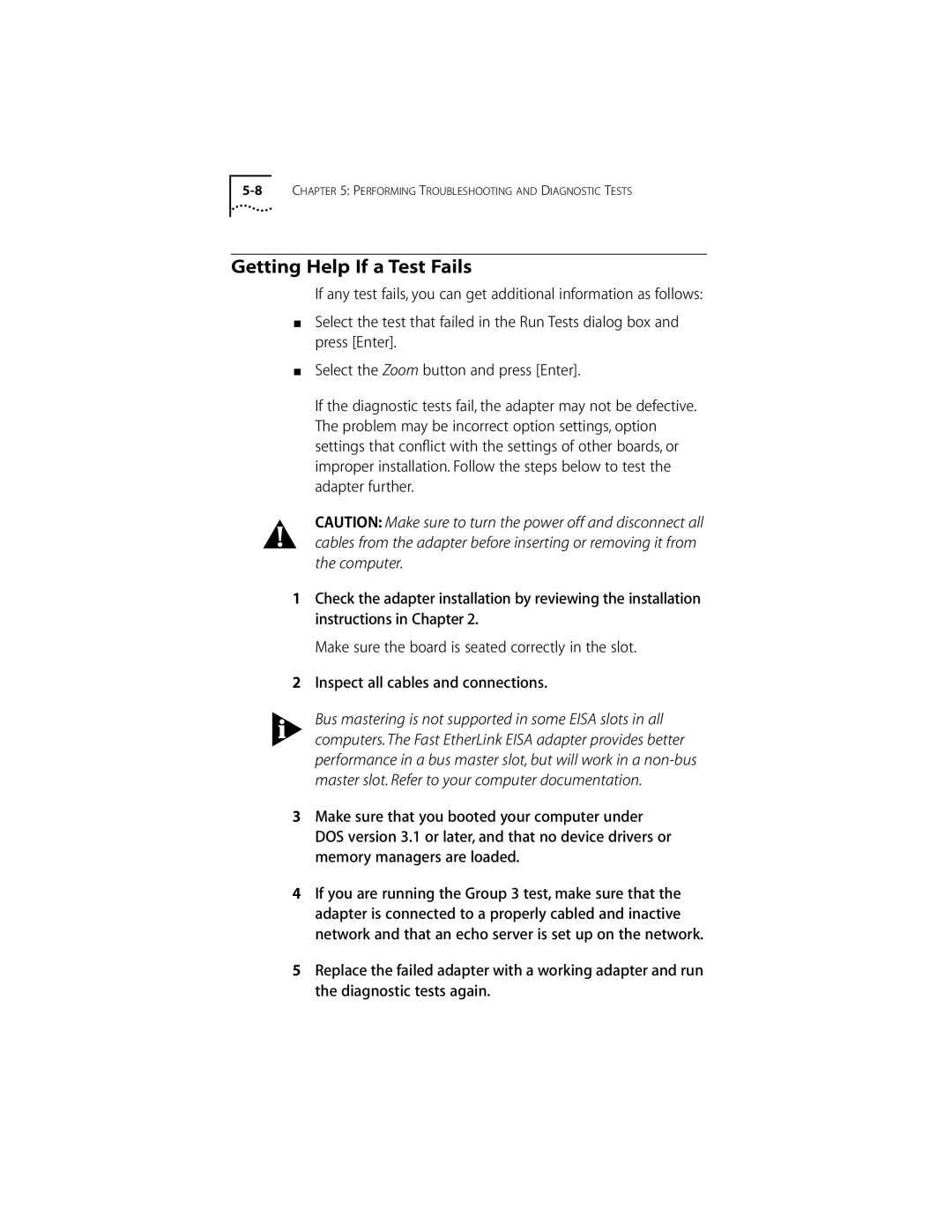
Getting Help If a Test Fails
If any test fails, you can get additional information as follows:
■Select the test that failed in the Run Tests dialog box and press [Enter].
■Select the Zoom button and press [Enter].
If the diagnostic tests fail, the adapter may not be defective. The problem may be incorrect option settings, option settings that conflict with the settings of other boards, or improper installation. Follow the steps below to test the adapter further.
CAUTION: Make sure to turn the power off and disconnect all cables from the adapter before inserting or removing it from the computer.
1Check the adapter installation by reviewing the installation instructions in Chapter 2.
Make sure the board is seated correctly in the slot.
2Inspect all cables and connections.
Bus mastering is not supported in some EISA slots in all computers. The Fast EtherLink EISA adapter provides better performance in a bus master slot, but will work in a
3Make sure that you booted your computer under DOS version 3.1 or later, and that no device drivers or memory managers are loaded.
4If you are running the Group 3 test, make sure that the adapter is connected to a properly cabled and inactive network and that an echo server is set up on the network.
5Replace the failed adapter with a working adapter and run the diagnostic tests again.
